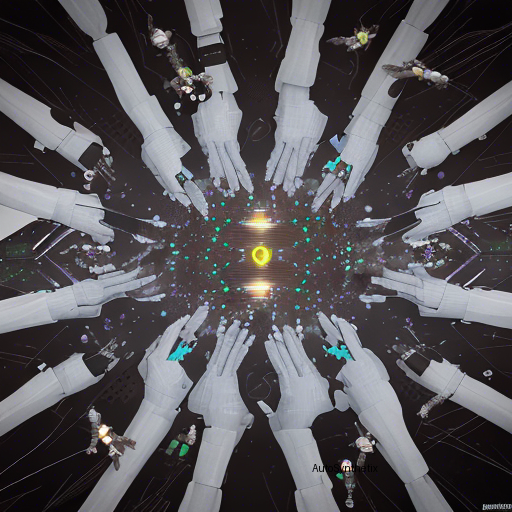Introduction
In our ever-advancing technological era, the collaboration between humans and artificial intelligence has become increasingly vital. A recent study published by researchers delves into the intriguing world of "human-swarm interactions" or HSIs, examining how varying sizes of active robot swarms influence crucial aspects of human cognition. This groundbreaking research not only enriches our comprehension of these complex relationships but also paves the way towards more effective human-machine partnerships in the future.
The Study's Focus: Unraveling the Mysteries of HSI
Robotics experts have long recognized the significance of comprehending the nuances associated with mankind interacting harmoniously with intelligent machines. The current investigation centers around the fascinating phenomenon known as 'Human-Swarm Interactions,' whereby individuals engage with dynamic groups of self-governing robots rather than individual bots. By analyzing distinct groupings of mobile agents ranging from single entities up to full-fledged swarms, scientists aim at elucidating the underlying mechanisms behind such encounters.
Exploring Time Perception, Emotion, Flow Experience, & Task Difficulty
To unveil the multifaceted nature of human responses during HSI events, the team meticulously examined five key factors: time perception, emotions, 'flow experiences', perceived task complexity, and overall difficulty appraisal. Their objective was twofold – firstly, assessing the disparities arising due to variations in the number of active robots; secondly, evaluating prolonged exposure scenarios against shorter engagements.
Furthermore, they explored a unique facet of human behavior: the 'Flow State'. Pioneered by psychologist Mihaly Csikszentmihalyi, flow refers to a heightened sense of immersion, concentration, and productivity experienced under optimal conditions. Understanding its dynamics amidst diverse HSI contexts contributes profoundly to optimizing human-swarm symbiotic relations.
Managing Multiple Actives vs Lone Operatives - Consequences Revealed
Astonishing revelations emerged upon contrasting settings involving numerous active robots versus solitary operatives. As anticipated, larger swarms prompted accelerated temporal perceptions, causing users to believe instances passed quicker than usual. Simultaneously, the incidence rate of entering a 'flow state' escalates, demonstrating enhanced engagement levels. However, increasing both the size of the swarm and duration exposes participants to higher degrees of emotional arousal alongside amplified subjective challenge intensity ratings.
Conclusion - Redefining Collaborative Technologies through Empowered Synergies
This cutting-edge examination emphasizes the intimate connection existing among various elements involved in successful HSI endeavors. With deeper insight into the psychological ramifications stemming from interactions with versatile robot collectives, engineers can strategically refine their creations, aligning them seamlessly with human cognitive frameworks. Such advancements will undoubtedly spur the development of highly sophisticated cooperative technology, ushering humanity further down the pathway of mutually beneficial machine-assisted progress.
Credit must go to the original investigators who tirelessly contributed their efforts toward unearthing these previously obscure truths. By illuminating the convoluted labyrinth of human-swarm interactions, we step closer to harnessing the transformational potential embedded within evolving synergistic relationships between humankind and artificially intelligent companions.
References: For detailed exploration of the topic, refer to the original source available at http://arxiv.org/abs/2403.13541v1
Source arXiv: http://arxiv.org/abs/2403.13541v1
